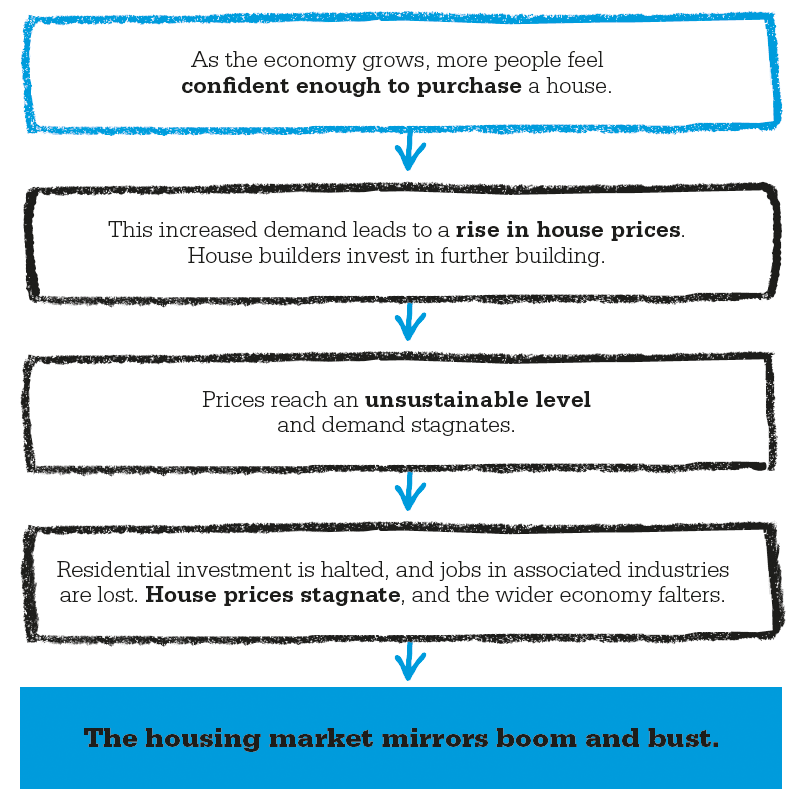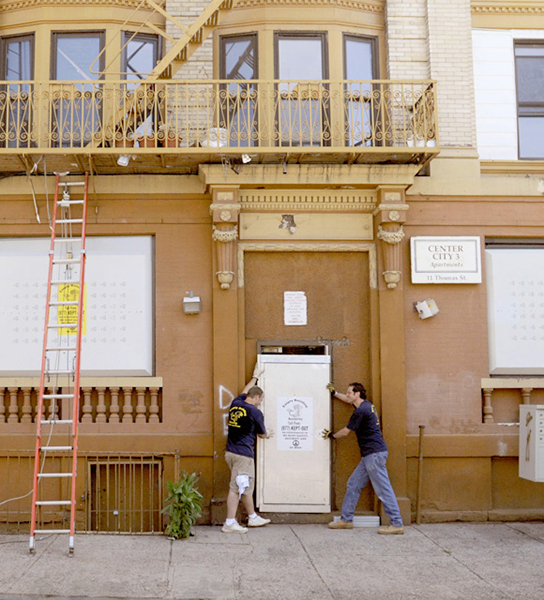

The macroeconomy
Charles Goodheart (1936–)
1965 US economist Sherman Maisel is the first to explore the effects of residential investment on the economy.
2003 US economists Morris Davis and Jonathan Heathcote conclude that housing prices are related to the overall state of the economy.
2007 US economist Edward Leamer argues that housing construction trends are an early warning of recession.
2010 US mortgage-lenders Fannie Mae and Freddie Mac are delisted on the New York Stock Exchange after lowering underwriting standards during the subprime crisis (offering mortgages to those unable to repay).
Movements in the housing market are a reflection of “boom and bust” cycles in the wider economy. These are the periods where an economy’s real output reaches its highest and lowest levels during the business cycle, which moves through periods of contraction and expansion, usually over periods of between three and seven years.

There are many reasons why residential investment is high in periods of economic growth. There are more jobs available, and a booming economy leads a greater number of people to think about buying their own home. At the same time mortgage lenders begin to relax their lending requirements, making buying easier, so more houses are sold. As this happens, the rising demand means that house prices rise. Those who sell are able to pay off large mortgages in full. House builders continue to invest in further housing stock to profit from the higher prices.
House prices are often relatively resilient, meaning that they do not change quickly in response to factors that could influence them. This is one of the reasons housing is seen as such a good investment, and rather than prices adjusting downward, they can remain stable even when the volume of sales falls.

A new housing development expands across farmland in the state of Washington during the boom period of the early 2000s. Building was fueled by lax mortgage-lending standards.
Although house prices are usually resilient, they have been known to stagnate; the accompanying decline in residential investment is often the first indicator that a recession is about to occur. In more developed countries the housing market has begun to decline before each major recession of the last 50 years. The housing market recovers only when consumers are confident that the value of their houses will rise. This confidence rises in step with an improving economy. As residential sales begin to return to a normal level, residential investment increases, providing jobs and further fueling a return to economic growth.
Economists have analyzed the relationship between the housing market and the overall economy and believe that by studying the levels of investment in housing, it is possible to accurately forecast recessions and recoveries. In their 2006 book Housing Prices and the Macroeconomy, British economists Charles Goodheart and Boris Hofmann showed that there is a correlation between economic performance and housing prices. They claim that by following appropriate policies in the future, it should be possible to strongly mitigate, or even avoid, the worst effects of a recession.
Unfortunately, this was not the case with the housing “bubble” that burst in the US in 2008. Here, rapid financial innovations created instability in mortgage financing that led to unwarranted consumer confidence and an unsustainable boom. The housing market was the cause of the eventual bust.

During the wave of bank foreclosures that followed the 2008 financial crisis, boarded up homes such as this one in New Jersey became a common sight.
The economic crash of 2008 owed much to the liberalization of the mortgage market and irresponsible lending by banks. At first, lenders enforced strict requirements on borrowers, lending only to those who could cover both the interest and repayments on the base amount that had been lent. However, as the economy improved, mortgages were offered to those who could afford to pay only the interest payments. These people were relying on an increase in their income or in the price of their home to pay off the balance of their loan.
In the US lenders then began to offer mortgages to people who did not earn enough even to cover the interest payments—these loans could only be serviced with strong growth in house prices and income. When the economy faltered and borrowers began to fail to pay back their loans, the whole economy collapsed.
See also: Boom and bust • Economic bubbles • Supply and demand • Testing economic theories • Financial crises